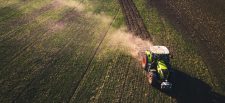The Health and Safety Executive (HSE) has published an open letter addressed to members of the food industry detailing the shortage of PPE as well as updated health and safety guidance for those continuing to work during the Covid-19 pandemic.
One of the main concerns for the HSE is the recognised shortages of dust masks. Without these masks, workings across the food industry may be subjected to hazardous substances, which can, in some cases, lead to occupational asthma.
Despite the shortage of dust masks, the HSE says it does not expect an increase of cases in occupational asthma and has instead issued guidance for employers on how to control the risks without the appropriate equipment.
In the open letter, the industry body said: “…suitable control can often be achieved using good working practices and local exhaust ventilation (engineering controls) which then means that employees do not need to wear dust masks; reducing overall pressure on the supply chain.
“Employers that effectively control exposure to flour dust using good working practices, engineering controls and PPE will not see an increase in cases. However, whenever cases are reported, in line with our publicly available Incident Selection Criteria, we will investigate them to understand the circumstances.”
The HSE also outlined options for those using PPE in an environment with an assigned protection factor (APF) of 10. This guideline is specific to the level of respiratory protection required for certain working environments.
For an APF of 10, workers are expected to wear respiratory protection for cleaning, maintenance, emergencies, cleaning up spillages and whenever required for safe working.
The guidance set out by the HSE to minimise the risks include:
- Using non-stick coatings on conveyor belts and greaseproof paper on trays instead of flouring the surfaces.
- Using low-dust flours as a lubricant and for dusting.
- Using flour improvers in paste or liquid form instead of powder to reduce the airborne dust generated when adding ingredients.
- Separating the weighing and dispensing of flour and powdered ingredients from the remainder of the production area using enclosures to contain the flour dust within the enclosure to minimise flour dust spreading.
- Using mixers with lids to contain the dust at the start of mixing cycles.
- Using effective, adequately designed and maintained local exhaust ventilation for dusty tasks such as bulk flour sieving, dispensing, weighing, tipping powdered ingredients.
- Ensuring all workers have been provided with information, instruction and training on careful flour handling techniques, including:
- Safe working practices to minimise flour dust.
- Ensuring ingredients in powder form are not tipped from a height into mixing bowls.
- Minimising airborne dust when folding and disposing of empty bags i.e. rolling the bag from the bottom while tipping avoiding the need to flatten or fold empty bags.
- Starting-up mixers on slow speed until wet and dry ingredients are combined.
- Avoiding hand dusting; using a sieve / dredger with minimal drop height.
- Using high efficiency industrial vacuum cleaners and avoid dry sweeping with a brush.
- Not using compressed airlines for cleaning off dust from equipment.
- Ensuring supervision to ensure all workers carry out the careful flour working techniques to minimise their exposure to flour dust, and they raise any concerns or defects immediately.
In reference to the shortage of equipment, the HSE also recommends only giving PPE to the workers who need it, issuing PPE specific to the level of risk for specific tasks i.e. use lower APF PPE, that of an APF of 10, where the level of personal flour dust exposure is lower and Providing instruction on maximising the use life of all PPE, by ensuring adequate user checks, cleaning and storage.









